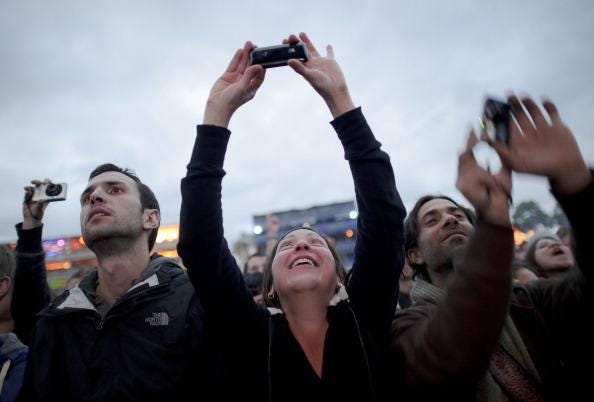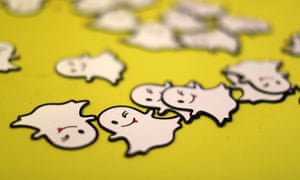Constructing Identity
1) Complete the Twenty Statements Test yourself. This means answering the question ‘Who am I?’ 20 times with 20 different answers. What do they say about your identity? Write the 20 answers in full on your blog.
- I am a brother
- I am Sikh
- I am a film maker
- I am a student
- I am determined
- I am brown
- I am a Star Wars fan
- I am 18
- I am a DC fan
- I am an Indian
- I am a risk taker
- I am the senate
- I am a 5'8
- I am me
- I am against racism
- I am the Barry Allen
- I am reliable
- I am a media student
- I am dedicated
- I am struggling to complete this task
2) Classify your answers into the categories listed on the Factsheet: Social groups, ideological beliefs, interests etc.
Social-
Beliefs-
Interests-
- I am a Media student
- I am Dedicated
- I am 5'8
- I am me
- I am reliable
- I am struggling to complete this task
- I am a risk taker
- I am 18
- I am an Indian
- I am a brother
- I am a student
Beliefs-
- I am Sikh
- I am against racism
- I am the senate
- I am brown
Interests-
- I am Barry Allen
- I am a Star Wars fan
- I am a film maker
- I am a DC fan
3) Go back to your favourite film (as identified in the lesson). What does this choice of film say about your identity? Are there any identities within the film (e.g. certain characters) that particularly resonated with your values and beliefs?
Chosen film: Goodfellas
The film chosen states I like quite serious, yet comedic as well as prestigious style of films like the film listed above. Films which is known for its intriguing story and characters. One of the main identities shown in the film would be the higher/upper class representation. There is a core theme played throughout this film and many films like it, between the lower and upper class. This is presented through the props and mise-en-scene that is shown in the film. The concepts of looking professional is an aspect I really value as a person, suits and ties really resonate with my style etc.
The film chosen states I like quite serious, yet comedic as well as prestigious style of films like the film listed above. Films which is known for its intriguing story and characters. One of the main identities shown in the film would be the higher/upper class representation. There is a core theme played throughout this film and many films like it, between the lower and upper class. This is presented through the props and mise-en-scene that is shown in the film. The concepts of looking professional is an aspect I really value as a person, suits and ties really resonate with my style etc.
4) Watch the trailers for the five films highlighted as examples of gay/lesbian representation in mainstream film. How are LGBT identities constructed in the trailers and how are audiences encouraged to respond to these representations?
Wilde- there is a sense of being ashamed of their sexuality which is evident through the father being bisexual, both being in love with a man and a woman. What makes this even more evident is the fact that the traielr itself puts it down to the viewer to infer that their is a relationship between the main character and another man, as it seems that on screen intercourse with someone from the same gender is possibily frowned upon at the time which is why it isn't seen in the trailer, rather inferred.
Philadelphia- audiences are seen to respect their sexuality. This is due to the fact that the film is based on the discrimination and proving a point, that everyone is equal in the world. If the outcome of the film is that the man wins the case, then it acts as a message to the viewer to accept this scenario in the real world. The films gives off a more realistic tone, as it has a very specific story regarding everyday issues of discrimination in the work place.
Pride- audiences are seen to see these people as normal people. They dress the same etc, and it also shows the norm that such people live, much like other peoples. The comedic element can also shy away from the core message. It may just make the audience laugh, but forget the entire message that the film is trying to convey.
The Wedding Banquet- much like the film above, as well as Wilde, the representation of sexuality is a hidden element, suggesting that their is a form of embarrassment of sexuality to the outside world, as evident through the groom. There is ideologies of betrayal of the younger generation, as the boy doesn't seem to match his parents expectations and their is a binary opposition between the youth and the older generation.
Philadelphia- audiences are seen to respect their sexuality. This is due to the fact that the film is based on the discrimination and proving a point, that everyone is equal in the world. If the outcome of the film is that the man wins the case, then it acts as a message to the viewer to accept this scenario in the real world. The films gives off a more realistic tone, as it has a very specific story regarding everyday issues of discrimination in the work place.
Pride- audiences are seen to see these people as normal people. They dress the same etc, and it also shows the norm that such people live, much like other peoples. The comedic element can also shy away from the core message. It may just make the audience laugh, but forget the entire message that the film is trying to convey.
The Wedding Banquet- much like the film above, as well as Wilde, the representation of sexuality is a hidden element, suggesting that their is a form of embarrassment of sexuality to the outside world, as evident through the groom. There is ideologies of betrayal of the younger generation, as the boy doesn't seem to match his parents expectations and their is a binary opposition between the youth and the older generation.

